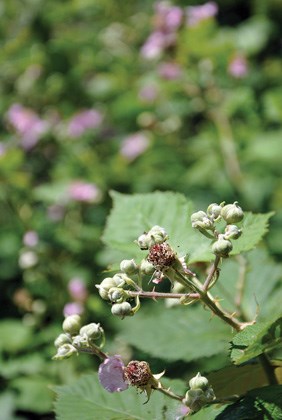My May 14 column Argument Falls Short that discussed some of the issues related to invasive plants seems to have "fallen short" with some readers.
To those readers who were offended by my comments - I apologize. If you have read my column over the years you will know that I am a strong supporter of the right plant for the right place, organic growing methods and preservation of the environment. And for the record, I would never tell anyone to plant certain invasives in their garden.
My discussion of the worldwide colonization by invasive plant species was meant to shine a light on the futility and ineffectiveness of current controls, and the environmental and financial cost of trying to control nature. Not one single non-native or invasive plant has been eradicated from "continental" British Columbia despite trying for the past 100 years. If someone knows different please let me know. Invasive plants are considered "biological pollutants" and are regularly cited as causing ecological destruction. While it is true that foreign plants can change our environment, there is a distinct lack of research-based decision making on the issue. As an example, invasive Tamarix species were thought to be "water hogs" causing ecological disaster. But further research has shown that Tamarix uses similar amounts of water to native plants and Tamarix supports many endangered bird species within its ecosystem.
The scope of exotic plant colonization within B.C. is widespread with many regions showing multiple foreign plant colonizations. The magnitude of the problem can be seen by purple loosestrife (Lythrum salicaria), a fast-growing herbaceous perennial that colonizes wetlands, ponds and roadsides. Loosestrife has naturalized in 10 Canadian provinces and 39 U.S. states. The claims of ecological disaster from loosestrife have been disproved with research showing that native bees and beneficial insects feed heavily on the flowers thereby providing a food source to replace the native plants that were destroyed by mining, farming and urbanization.
Ongoing control of non-native plants has cost trillions worldwide and millions of dollars in Canada while pouring millions of litres of poisonous pesticides onto our lands. Often in marginal, aquatic or foreshore environments where pesticide use is the most damaging and generally not permitted under provincial law. As an example, Japanese knotweed, which grows in those areas, is pesticidecontrolled by stem injection of high dose, almost pure strength Roundup (threefive millilitres per stem averaging 40-50 stems per colony). Versus the traditional foliar spray application of lower strength, dilute Roundup. Does anyone care about that? Or do the means justify the murky end?
Further examples of extensive colonization include orange hawkweed (Hieracium aurantiacum) and the oxeye daisy (Leucanthemum vulgare); both are now found widely in almost half of B.C. Scotch broom is now found throughout the south coast, Vancouver Island and Haida Gwaii. Knotweed (Fallopia japonica) is found throughout B.C.'s south coast, southern interior and nine other countries in the world. Himalayan blackberry (Rubus armeniacus) is found on Vancouver Island, the south coast, and parts of the southern interior all the way to the Kootenays.
The need for change in managing alien species invasions is discussed by Mark A. Davis, a biology professor from Macalester College in Minnesota. His book, Fifty Years of Invasion Ecology: The Legacy of Charles Elton, by Blackwell Publishing Ltd., discusses some interesting ideas and dispels many myths. Davis explains, "A review of extinction threats in Canada found introduced species to be the least important of the six categories analyzed (habitat loss, overexploitation, pollution, native species interactions, introduced species and natural causes (Venter et al. 2006)." Davis not only discusses the ecological issues and the change needed to meet the challenge, he also gets right to the point with this comment: "Today's management approaches must recognize that the natural systems of the past are changing forever thanks to drivers such as climate change, nitrogen eutrophication, increased urbanization and other land-use changes. It is time for scientists, land managers and policy-makers to ditch this preoccupation with the 'native versus alien dichotomy' and embrace more dynamic and pragmatic approaches to the conservation and management of species, approaches better suited to our fast-changing planet."
I applaud everyone trying to prevent alien plants from colonizing our shores. However, for many invasives it is too late. Applying enough pesticide every year to fill BC Place stadium more than once, while still not controlling invasive plants is inflicting too much damage on our environment. What is really needed is a cohesive, science-based, multijurisdictional law from the federal government that implements improved border inspections, insurance and maybe bonding, fines or management taxes on importers. Such a law combined with a new allencompassing provincial law restricting soil and plant movement and the sale of invasive plants would go a long way in helping control invasive plants now and in the future.
Todd Major is a journeyman horticulturist, garden designer and builder, teacher and organic advocate. [email protected]



